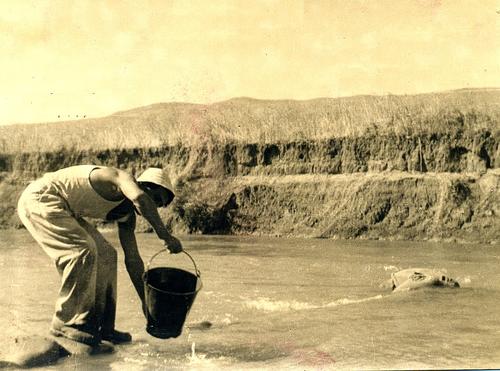How was Integrated Watershed Management developed?
Draw drinking water in the river (Livni 1947)
Image Credit: Gad Livni http://en.wikipedia.org/wiki/File:PikiWiki_Israel_3828_Drinking_Water.jpg
Two statements about the novelty of the IWM approach are given in the following:
- IWM is a well‐established approach as it already existed in 1950. The management of water resources was practised even in prehistoric time [2].
- IWM is a new approach: as it is understood today, it has not been practised at any earlier time.
.
Watershed Management is a new concept with a long history during which it has been understood in different ways.
For thousands of years people have attempted to control the flow and quality of water. Different activities undertaken to manage water have been documented since these early times. This included also irrigation of agricultural land. Also conflicts about water uses are known from Mesopotamia 4,500 years ago. But the management of water was not done within watersheds. And as Heathcote stated [2]: “Despite this long experience in water use and water management, humans have failed to manage water well”.
Especially the economic developments since the 19 th century have proceeded at the expense of sound water management.
Rethinking took place in the 1960s. It was recognised that a centralistic way of water management on a national level failed. Instead it was realised that decentralised water management at level of watersheds is required [2]. An early concept of watershed management emerged in 1950. However, this was not a concept of rural development which is orientated to a sustainable and integrated natural resource management [1]. As the ecosystem concept emerged in the 1980s the integrated approach for a sustainable management of natural resources and rural development was developed [10].



